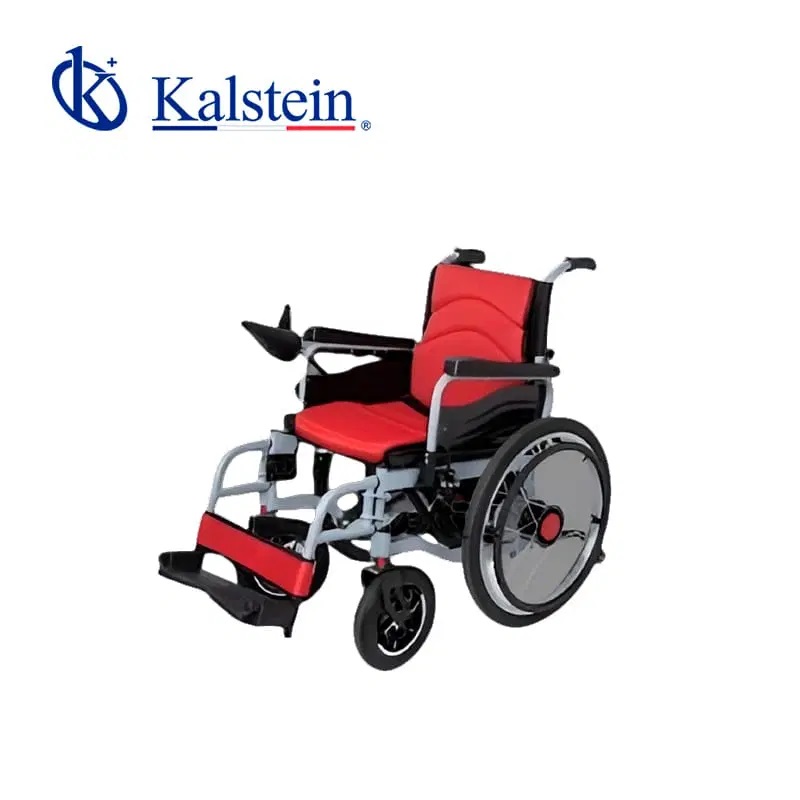Wheelchairs are essential tools for the mobility and independence of many individuals. With the latest advancements in medical technology and laboratory research, these tools have significantly evolved, offering greater comfort, safety, and efficiency.
This article provides a detailed guide on how to use a medical line wheelchair to achieve the best possible results, including practical tips and step-by-step tutorials.
We understand that you need equipment that delivers maximum value to your laboratory. We invite you to visit https://kalstein.de/category-product/medical-line/wheelchair/, to immerse yourself in our universe of cutting-edge technology equipment. Our prices are competitive and accessible, we combine the convenience of online shopping with the guarantee of an exceptional product. Because you deserve the best, we create and offer top-tier laboratory equipment. Make your choice today, where science comes to life. https://kalstein.de/
Selecting the Right Wheelchair
Identifying Specific Needs
Before acquiring a wheelchair, it is crucial to identify the specific needs of the user. This includes considering factors such as mobility, the type of terrain where the chair will be used, and any medical conditions that may affect its use. Customization is key to ensuring the wheelchair perfectly fits the user, providing comfort and efficiency.
Medical and Professional Consultations
Consulting with medical professionals and occupational therapists is essential when selecting the right wheelchair. These experts can offer recommendations based on the physical condition and specific needs of the user. Additionally, they can suggest models that incorporate the latest trends in medical technology and recent advances in laboratory research, ensuring the user has access to the best on the market.
Adjusting and Customizing the Wheelchair
Seat and Backrest Adjustment
Proper adjustment of the seat and backrest is fundamental for the user’s comfort and health. A well-fitted seat can prevent posture problems and reduce the risk of pressure sores. Ensure the seat has the correct width and depth, and that the backrest provides the necessary support for the spine. Using ergonomic cushions and pads can significantly improve the user’s experience.
Configuring Footrests and Armrests
The height and position of the footrests and armrests also play a crucial role in the user’s comfort. Adjust the footrests so that the feet rest comfortably without exerting pressure on the legs. Armrests should be at a height that allows the arms to rest without elevating the shoulders, avoiding muscle strain. These personalized configurations can make a significant difference in the daily use of the wheelchair.
Daily Use and Maintenance of the Wheelchair
Safe Transfer Techniques
One of the most important skills for wheelchair users is safe transfer to and from the chair. Use proper techniques to minimize the risk of falls and injuries. This may include using transfer boards or caregiver assistance. Practicing these techniques under the supervision of a healthcare professional can improve the user’s confidence and safety.
Regular Maintenance and Technical Inspection
Regular maintenance of the wheelchair is essential for its optimal functioning and user safety. Periodically inspect the wheels, brakes, and folding mechanisms to ensure they are in good condition. Lubricate moving parts and replace any worn or damaged components. Proper maintenance can extend the wheelchair’s lifespan and ensure its efficient performance.
Maximizing Mobility and Independence
Using Assistive Technologies
The latest trends in medical technology have introduced a variety of assistive devices that can be integrated with wheelchairs. This includes electric motors, joystick controls, and advanced navigation systems. These devices can significantly enhance the user’s mobility and independence, allowing them to move with greater ease and control.
Participation in Daily Activities
Encouraging active participation in daily activities is crucial for the mental and physical health of wheelchair users. This includes recreational, social, and work-related activities. Using a well-adjusted and maintained wheelchair can facilitate these activities, allowing the user to enjoy a full and active life.
Recent Advances in Wheelchair Technology and Design
Innovations in Materials and Structure
Recent advances in laboratory research have led to the development of lighter and more durable materials for wheelchairs. These materials not only improve the durability and maneuverability of the chair but also reduce the effort required for its use. Ergonomic and adjustable designs allow for greater customization and comfort, better adapting to the individual needs of each user.
Integration of Smart Technology
The integration of smart technology in wheelchairs is revolutionizing the sector. Assisted navigation systems with GPS, pressure sensors, and mobile applications for monitoring the chair’s condition are just some of the recent innovations. These technologies allow for more precise control and provide valuable information for maintenance and continuous improvement of the device.
Practical Tips for Users and Caregivers
Education and Training
Education and training are fundamental for the effective use of a wheelchair. Users and their caregivers should be well-informed about best practices for use, maintenance, and safety. Participating in training programs and workshops can provide valuable skills and increase confidence in handling the wheelchair.
Support Network and Community Resources
Building a strong support network can be very helpful for wheelchair users. Connecting with support groups, community organizations, and local resources can provide practical and emotional assistance. Additionally, staying updated on the latest trends in medical technology and recent advances in laboratory research can open new opportunities to improve the user’s quality of life.
Conclusion
Effectively using a medical line wheelchair can transform the lives of users, providing them with greater mobility, independence, and comfort. By following this detailed guide, users and caregivers can maximize the benefits of these devices, integrating the latest trends in medical technology and recent advances in laboratory research.
With proper education, regular maintenance, and community support, it is possible to achieve the best results and enjoy a full and active life.

